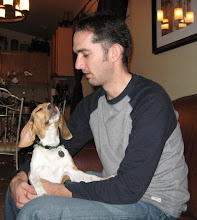I often think back to my statistics classes when reaching for a pair of socks every morning. Yes, the geek part of my brain is a permanent resident. Usually there are two types of socks in the box in the closet, and the lectures of probabilities run through my head after I retrieve the first sock.
"How many socks would you have to select from a box with X types of socks to ensure that you had a matching pair?"
Since I have two types of socks in the box, the answer is three. If I selected three socks I would be guaranteed to have a pair, though I could get lucky and get a pair after only selecting two. I won't go through the maths, but it makes sense if you think through each selection. The first time I will get one of the two types. The second time I will get one of the two types as well. Assuming I have mis-matched socks after two selections, the third is guaranteed to match one of the socks I've already selected.
The logic behind that is pretty sound. You don't have to have a degree in statistics to understand those kinds of probabilities. They make sense to us because we experience them everyday, though I'm not sure everyone thinks about the maths of it when choosing socks.
A strange thing happened a few days ago that helped me understand this whole process a bit differently, and gave me a bit of insight into what scientists have been struggling with recently with the advent of the internet. As I drew my two socks from the box I thought, "Alright, now this next one is guaranteed to match." I was surprised to discover that I had draw a third type of sock from the box. Somehow the contents of the box had become "contaminated" and my rock solid laws of probability were spun into confusion.
Was my original probability wrong? Well, it was based on the assumption that there were only two types of socks in the box. As long as that assumption was true, so was the probability. The moment it wasn't true - and there were more than two types in the box, the original probability changed. The key, though, is that it changed in a predictable way - but based on a new set of assumptions. With three types of socks I'd now have to draw four to ensure I had a pair.
This was an interesting parallel to my experience with some anti-science groups. They will often claim that science is flawed because it hasn't considered all of the options. In other words, science can't guarantee there are only two types of socks in the box - so any attempts to explain how many attempts it would take to select a matching pair can't be trusted. Just like my unexpected discovery with the third type of sock, any possibility that there are other options - no matter how remote, is proof that the science is flawed. This is especially difficult to understand when the probabilities for things being talked about, like fluoride, cell phones and cancer, vaccinations, are more complex. The science isn't just about how many socks you have to select to get a matching pair.
However, despite what the anti-science people may claim, the problem is not that the logic behind the probabilities is flawed. The issue I have with this is that from the anti-science point-of-view the discussion is not about recalibrating the original assumptions to account for what is constantly being discovered, it's a complete discounting of the whole process. "This part of science is wrong because it can't guarantee that it's right," they might say. Well, there aren't many guarantees in life. I'd like a guarantee that I will never have to jump out of a plane or be struck by lightning, but the fact that I am alive on a volatile world means that I have to accept a certain level of risk. Besides, science is not supposed to be about absolute correctness, it changes all the time based on new knowledge and insight. When something is discovered that changes things, scientists go back to the original probabilities and say, "Hey, would you look at that! There's another type of sock, and that means the number of selections has changed."
So when I selected that third type of sock a few days ago, I thought about how the new discovery didn't actually ruin the years of statistical learning. Rather, I wondered how it got in there and threw off my expectations. The box should have had two types, and somehow this one got in where it shouldn't have been. When I sorted it into the proper box my original assumption was true again. I wonder if we will ever get back to a more adaptive kind of logic in popular discussions about science. I certainly don't want to live in a world of either / or's... gray can be such a lovely color.










